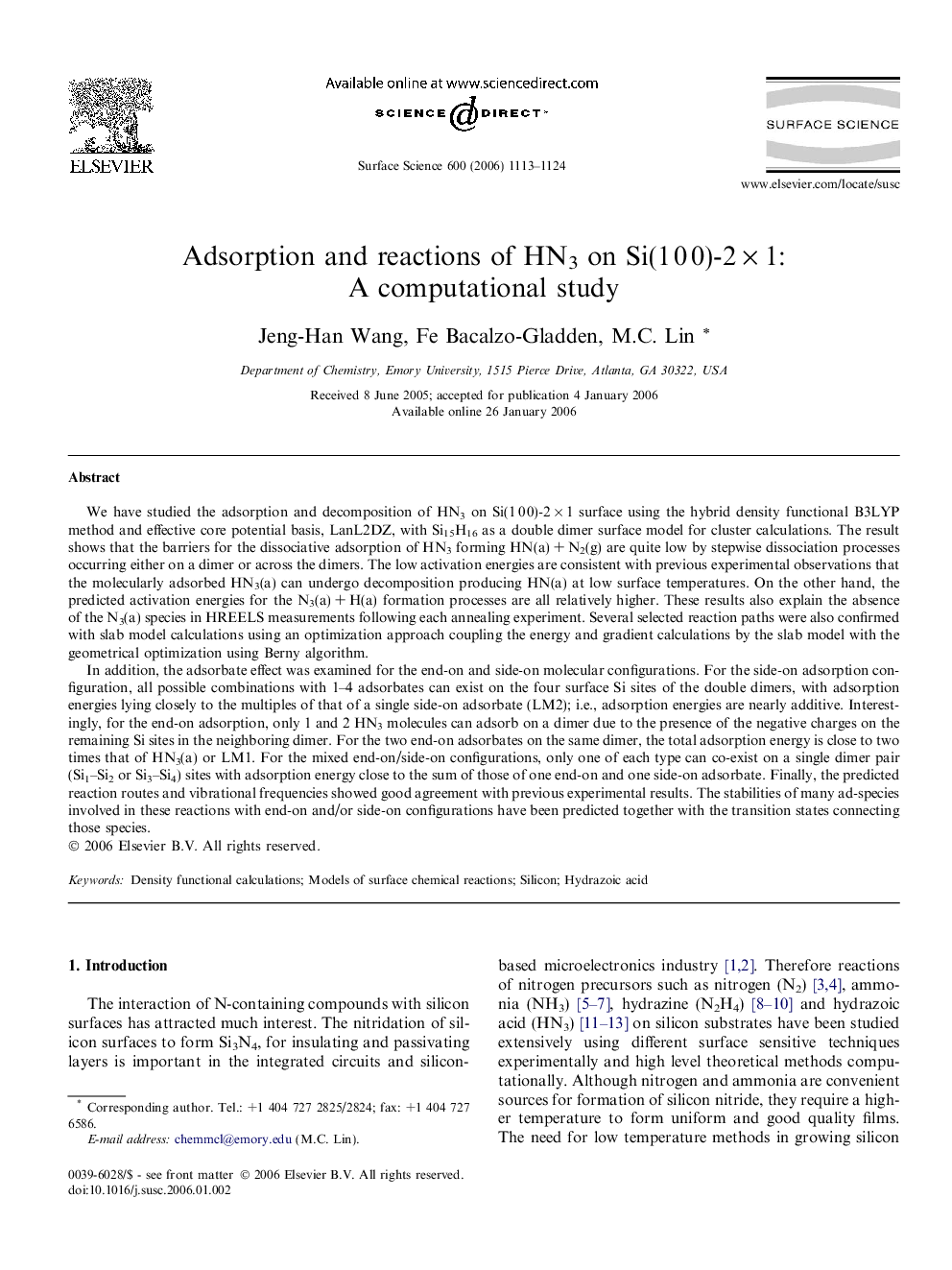| کد مقاله | کد نشریه | سال انتشار | مقاله انگلیسی | نسخه تمام متن |
|---|---|---|---|---|
| 5425912 | 1395869 | 2006 | 12 صفحه PDF | دانلود رایگان |

We have studied the adsorption and decomposition of HN3 on Si(1Â 0Â 0)-2Â ÃÂ 1 surface using the hybrid density functional B3LYP method and effective core potential basis, LanL2DZ, with Si15H16 as a double dimer surface model for cluster calculations. The result shows that the barriers for the dissociative adsorption of HN3 forming HN(a)Â +Â N2(g) are quite low by stepwise dissociation processes occurring either on a dimer or across the dimers. The low activation energies are consistent with previous experimental observations that the molecularly adsorbed HN3(a) can undergo decomposition producing HN(a) at low surface temperatures. On the other hand, the predicted activation energies for the N3(a)Â +Â H(a) formation processes are all relatively higher. These results also explain the absence of the N3(a) species in HREELS measurements following each annealing experiment. Several selected reaction paths were also confirmed with slab model calculations using an optimization approach coupling the energy and gradient calculations by the slab model with the geometrical optimization using Berny algorithm.In addition, the adsorbate effect was examined for the end-on and side-on molecular configurations. For the side-on adsorption configuration, all possible combinations with 1-4 adsorbates can exist on the four surface Si sites of the double dimers, with adsorption energies lying closely to the multiples of that of a single side-on adsorbate (LM2); i.e., adsorption energies are nearly additive. Interestingly, for the end-on adsorption, only 1 and 2 HN3 molecules can adsorb on a dimer due to the presence of the negative charges on the remaining Si sites in the neighboring dimer. For the two end-on adsorbates on the same dimer, the total adsorption energy is close to two times that of HN3(a) or LM1. For the mixed end-on/side-on configurations, only one of each type can co-exist on a single dimer pair (Si1-Si2 or Si3-Si4) sites with adsorption energy close to the sum of those of one end-on and one side-on adsorbate. Finally, the predicted reaction routes and vibrational frequencies showed good agreement with previous experimental results. The stabilities of many ad-species involved in these reactions with end-on and/or side-on configurations have been predicted together with the transition states connecting those species.
Journal: Surface Science - Volume 600, Issue 5, 1 March 2006, Pages 1113-1124